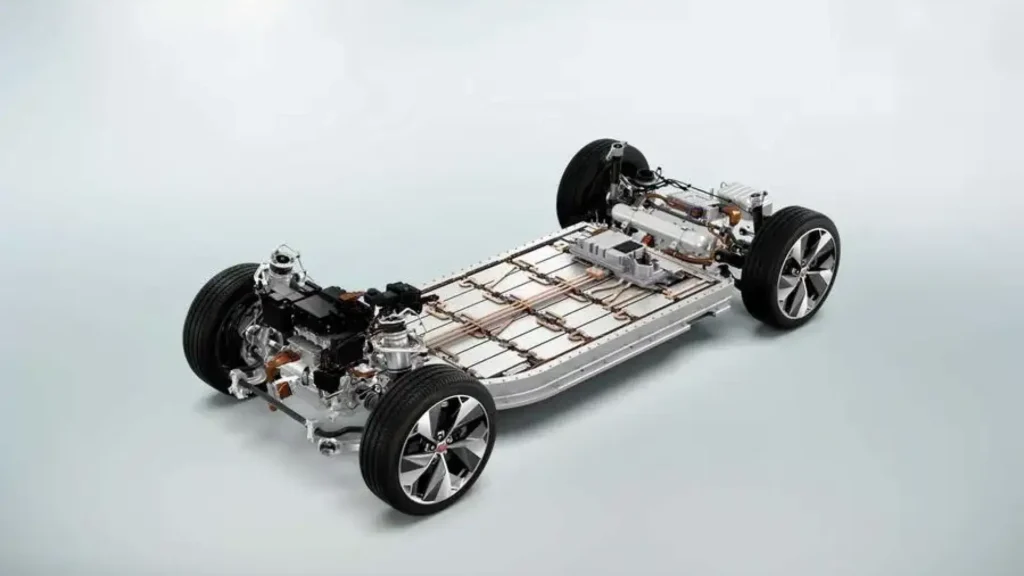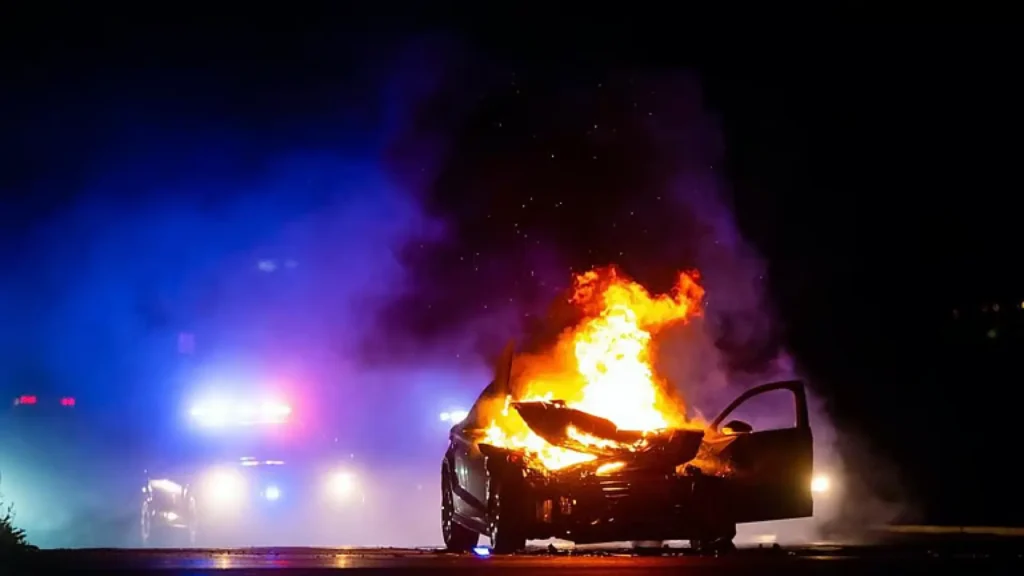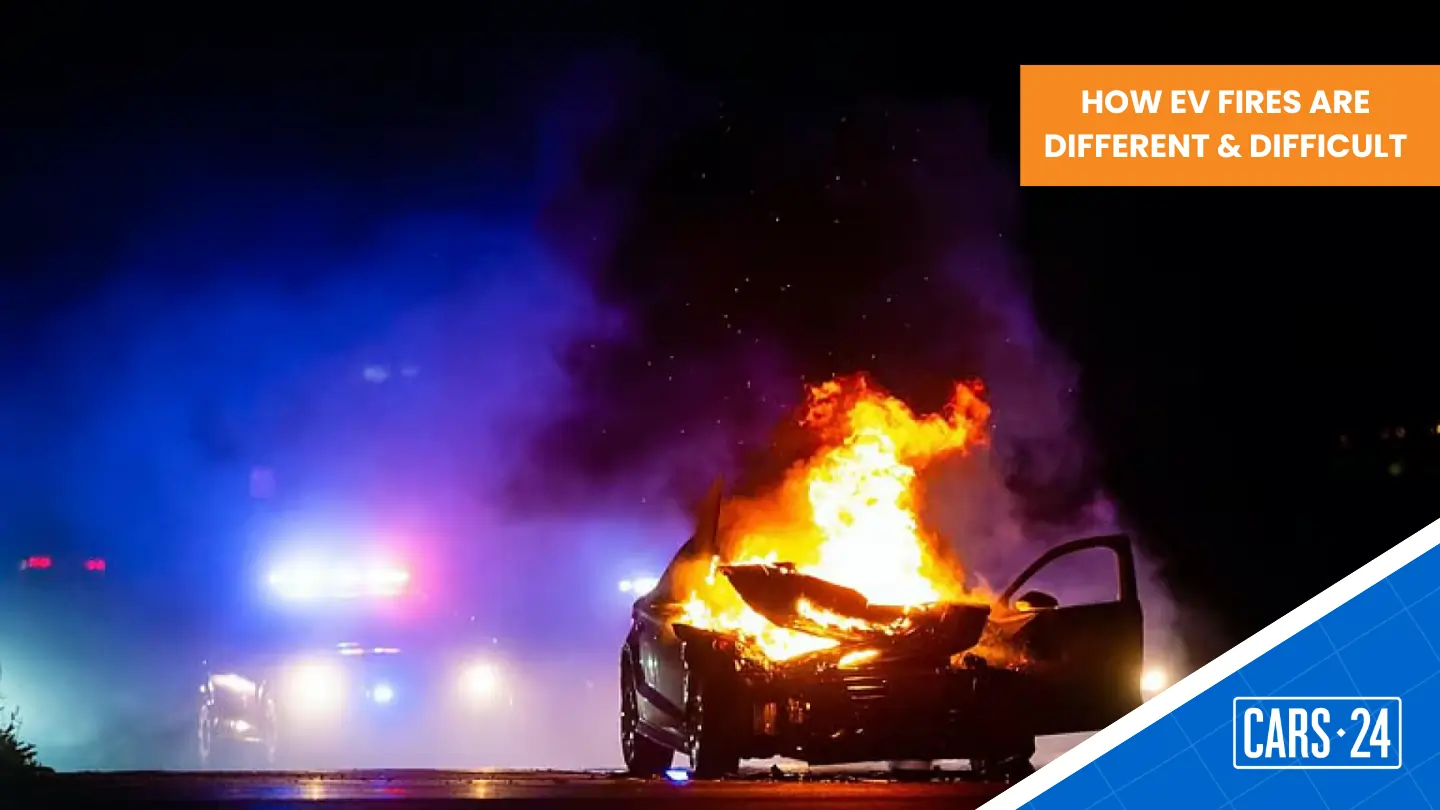On June 3, 2025, the cargo ship Morning Midas reported a fire on board approximately 300 miles Southwest of Alaska’s Adak Island. The vessel was transporting over 3,000 vehicles, including around 800 electric and hybrid models. According to unconfirmed reports, the fire broke out on one of the EV-carrying decks. Despite the crew’s efforts to control the blaze using onboard fire suppression systems, the fire persisted, leading to the evacuation of all 22 crew members. This incident brings to light the distinct and formidable challenges associated with fires involving electric vehicles (EVs), particularly those powered by lithium-ion batteries.

The nature of Lithium-Ion battery fires
Thermal runaway: A self-sustaining reaction
Lithium-ion batteries, commonly used in battery electric vehicles and even hybrid electric vehicles, are susceptible to a phenomenon known as thermal runaway. This occurs when a battery cell overheats, leading to a chain reaction that causes adjacent cells to overheat and potentially ignite. The process is self-sustaining and can result in fires that are difficult to control.
High temperatures and toxic emissions
Fires involving lithium-ion batteries can reach temperatures between 700°C and 1,000°C. These blazes not only pose a risk due to their extreme heat but also release toxic gases, including hydrogen fluoride and carbon monoxide, which can be hazardous to both humans and the environment.

Challenges in extinguishing EV fires
Ineffectiveness of traditional suppression methods
Conventional fire suppression systems, such as CO₂-based extinguishers, are often inadequate for lithium-ion battery fires. In the case of the Morning Midas, the onboard CO₂ system was exhausted without successfully extinguishing the fire, which later reignited. Meanwhile, reports on dealing with fires between combustion-engined cars and EVs have estimated that the latter could need up to 40 times more water to be extinguished.
Risk of reignition
Even after appearing to be extinguished, lithium-ion battery fires can reignite hours or even days later. This is due to residual heat and the potential for remaining cells to undergo thermal runaway, necessitating prolonged monitoring and cooling efforts.
Implications for maritime transport
Increased risks with EV shipments
The transportation of EVs by sea introduces new risks, as evidenced by the Morning Midas incident. The presence of a significant number of electric and hybrid vehicles onboard likely contributed to the severity and persistence of the fire.
Parallels with the Felicity Ace incident
The Morning Midas fire is reminiscent of the 2022 Felicity Ace disaster. The Felicity Ace, carrying nearly 4,000 vehicles—including electric models from Audi, Porsche, and Volkswagen—caught fire in the Atlantic Ocean. The blaze, believed to have been fueled by lithium-ion batteries, led to the ship’s sinking and the loss of its entire cargo .
Both incidents underscore the risks associated with transporting EVs and the need for specialized safety measures.

Need for enhanced safety protocols
These incidents highlight the necessity for updated safety protocols when transporting EVs, including specialized fire suppression systems and crew training to handle lithium-ion battery fires effectively. In the longer run, electric carmakers can work on improving the battery technology to reduce the risk of their cars catching fire even under harsh conditions during transit.
Conclusion

The challenges posed by lithium-ion battery fires in electric vehicles are significant, particularly in maritime contexts. As the adoption of EVs continues to rise, it is imperative for the shipping industry to adapt by implementing enhanced safety measures to mitigate the risks associated with transporting these vehicles.

Comments
New Comment